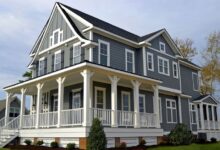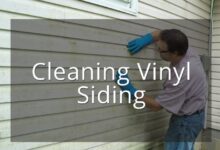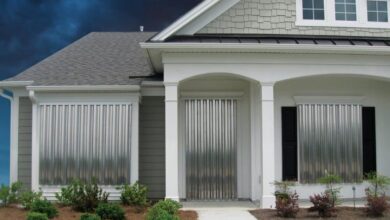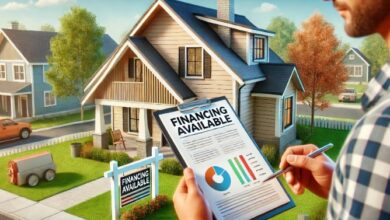When it comes to choosing the perfect exterior material for your home, the debate often comes down to wood siding vs vinyl siding. Both materials offer unique benefits, but how do you know which one is best for your needs? This comprehensive guide will break down the differences, benefits, and key considerations of each material to help you make an informed decision. Whether you’re building a new home or renovating your current one, choosing the right siding is crucial to both the aesthetic appeal and long-term durability of your property.
Key Differences Between Wood Siding and Vinyl Siding
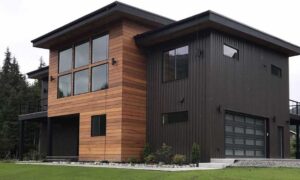
| Feature | Wood Siding | Vinyl Siding |
|---|---|---|
| Aesthetic Appeal | Natural, rustic look that can be stained or painted. | Available in many colors and textures, but lacks the natural appeal of wood. |
| Durability | Requires regular maintenance (painting, sealing). | Low maintenance and highly durable. |
| Installation | Typically more labor-intensive. | Easier and faster to install. |
| Cost | Higher initial cost due to materials and maintenance. | Lower upfront cost and long-term savings. |
| Energy Efficiency | Good insulation if properly installed. | Better at insulating, depending on thickness. |
1. What is Wood Siding?
Wood siding has been a traditional favorite for centuries, offering a natural and charming appearance that complements a variety of architectural styles. It can be made from different types of wood like cedar, pine, or redwood. The versatility of wood allows homeowners to paint or stain it to their desired shade, providing a personalized touch to their home’s exterior.
Benefits of Wood Siding:
- Aesthetic Appeal: Nothing compares to the beauty and natural feel of wood. Whether you choose a classic painted look or a rustic stained appearance, wood siding offers timeless curb appeal.
- Eco-Friendly: Wood is a renewable resource, and when responsibly sourced, it can be an environmentally friendly option. It also has better biodegradability than vinyl.
- Customization: You can easily change the color of your siding by painting or staining it, giving you complete control over the appearance of your home.
Real World Example of Wood Siding Products:
- Cedar Siding from The Home Depot
View Product
Known for its natural resistance to insects and rot, cedar wood siding is an excellent choice for durability and aesthetic beauty. - Pine Siding from Lowe’s
View Product
Pine is an affordable option for homeowners who want the look of wood siding on a budget.
2. What is Vinyl Siding?
Vinyl siding has become one of the most popular exterior materials for modern homes. It is made from PVC (polyvinyl chloride) and is often available in a variety of colors and textures. Unlike wood, vinyl doesn’t require painting and is known for being low-maintenance and long-lasting.
Benefits of Vinyl Siding:
- Low Maintenance: Vinyl siding doesn’t need to be painted or stained regularly, making it ideal for busy homeowners.
- Durability: Vinyl is highly resistant to harsh weather, rot, and pests, making it a reliable option in almost any climate.
- Cost-Effective: Vinyl is typically more affordable than wood siding, both in terms of installation and maintenance costs.
Real World Example of Vinyl Siding Products:
- James Hardie Fiber Cement Siding
View Product
Known for its incredible durability, this siding is resistant to fire, pests, and harsh weather. - CertainTeed Vinyl Siding
View Product
Offering a wide range of colors and styles, CertainTeed is renowned for its long-lasting vinyl siding options.
Benefits of Using Vinyl Siding
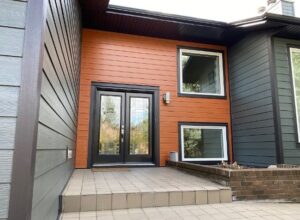
When it comes to exterior home siding options, vinyl siding is one of the most popular choices for homeowners across the globe. This durable, low-maintenance material has earned its place due to its many advantages. Whether you’re building a new home or upgrading your current exterior, vinyl siding offers a host of benefits that make it a smart choice. Let’s dive into the key benefits of using vinyl siding for your home.
1. Low Maintenance Needs
One of the biggest advantages of vinyl siding is its low maintenance requirement. Unlike wood siding, which needs regular painting, staining, and sealing, vinyl siding only requires occasional cleaning. A simple wash with soap and water is usually enough to keep it looking fresh. Here’s how it compares:
- No Painting or Staining: Vinyl siding is available in a variety of colors that won’t fade over time, which means you won’t need to re-paint or re-stain it every few years.
- Mold & Mildew Resistance: Vinyl is less prone to mold, mildew, or algae growth compared to wood, which can absorb moisture and lead to rot.
🧽 Benefit: This means you spend less time and money on upkeep, making vinyl siding ideal for busy homeowners.
2. Durability That Lasts for Decades
Vinyl siding is well-known for its long-lasting durability, which is one of the main reasons it’s so popular. Here’s why:
- Weather Resistance: Vinyl siding is designed to withstand extreme weather conditions, including heavy rain, snow, and intense sun. Unlike wood, it won’t warp or crack due to the elements.
- Pest Resistance: Unlike wood, vinyl isn’t a food source for termites or other pests, which means it won’t suffer from pest damage.
💪 Benefit: With proper installation, vinyl siding can last for 20-40 years, depending on the quality and climate conditions.
3. Cost-Effective & Budget-Friendly
While the initial cost of vinyl siding might be slightly higher than some other materials, it’s generally more affordable than wood siding in both upfront costs and long-term maintenance. Here’s why it’s such a cost-effective choice:
- Lower Initial Costs: Vinyl tends to be cheaper per square foot than wood or other materials like stone or brick.
- No Frequent Maintenance Costs: Since it doesn’t need to be painted or stained regularly, you’ll save a significant amount over time compared to other options.
🤑 Benefit: Vinyl siding is a great investment for homeowners looking to save on both installation and maintenance over time.
4. Energy Efficiency
Today’s vinyl siding is not only designed to be aesthetically pleasing but also energy-efficient. Some vinyl siding options come with built-in insulation, which helps reduce energy costs by improving your home’s thermal performance. Here’s how:
- Thermal Insulation: Insulated vinyl siding provides an extra layer of protection, helping to keep your home cooler in the summer and warmer in the winter.
- Reduced Energy Bills: With better insulation, your heating and cooling systems won’t need to work as hard, which can translate into lower energy bills.
🌍 Benefit: Vinyl siding can improve the energy efficiency of your home, making it more eco-friendly and cost-effective in the long run.
5. A Wide Variety of Styles and Colors
Vinyl siding is incredibly versatile in terms of appearance. It’s available in a wide range of colors, textures, and finishes that can match any home style, from classic to modern. Some styles even mimic the look of traditional wood siding, without the upkeep!
- Color Options: Vinyl siding comes in almost every color imaginable, and because it’s colorfast, it won’t fade like some other materials do.
- Textural Variety: You can choose from smooth finishes, wood grain textures, or even styles that mimic the appearance of cedar shakes or traditional lap siding.
🎨 Benefit: You’ll have plenty of design flexibility to match your home’s exterior style and personality, without worrying about color fading over time.
6. Environmentally Friendly
Though vinyl siding is made from PVC (a type of plastic), it still offers some environmental benefits compared to other options:
- Energy Efficiency: As mentioned, the insulating properties of vinyl siding help reduce energy consumption in your home, which lowers your overall carbon footprint.
- Longevity: Vinyl’s long lifespan means you won’t have to replace it as frequently as other materials, which reduces the waste produced over time.
🌱 Benefit: While vinyl isn’t biodegradable, its long-lasting nature and energy-saving capabilities contribute to making it a greener choice for home exteriors.
7. Easy to Install ⚙️
Vinyl siding is known for its ease of installation. Unlike wood or brick, which require skilled labor and specialized tools, vinyl siding can often be installed quickly and efficiently.
- Pre-Cut Panels: Vinyl siding panels are pre-cut, which makes the installation process quicker compared to custom-cut materials like wood.
- DIY-Friendly: For experienced DIYers, vinyl siding is something that can be tackled with the right tools and a bit of patience. However, professional installation is always an option for those who prefer it.
🛠️ Benefit: Faster installation means less disruption to your home, and with fewer labor costs, you’ll save money.
Wood Siding vs Vinyl Siding: Which One Should You Choose?
Use Cases for Wood Siding:
- Traditional Homes: If you’re looking to maintain a classic, rustic look, wood siding is perfect.
- Eco-Conscious Consumers: Homeowners who prioritize sustainability may prefer wood as it is a natural and renewable resource.
- Customizable Appearances: Those who love to change their home’s look frequently may appreciate the ease with which wood can be repainted or stained.
Use Cases for Vinyl Siding:
- Low-Maintenance Homes: If you’re looking for a hands-off solution with minimal upkeep, vinyl siding is the way to go.
- Budget-Friendly Options: For those on a budget, vinyl offers an affordable alternative that doesn’t compromise on quality.
- Harsh Weather Conditions: Vinyl is better equipped to handle extreme weather conditions, such as heavy rains, snow, and wind.
Comparison Table: Wood Siding vs Vinyl Siding
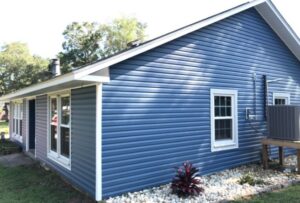
| Feature | Wood Siding | Vinyl Siding |
|---|---|---|
| Installation | Labor-Intensive | Easy & Fast |
| Durability | Needs Maintenance | Low Maintenance, Long-Lasting |
| Cost | Higher Initial Cost | Affordable, Low Maintenance |
| Appearance | Natural, Customizable | Synthetic, but available in many colors |
| Energy Efficiency | Moderate if Insulated | High with Insulation Options |
Where to Buy Wood Siding & Vinyl Siding?
How to Buy Wood Siding or Vinyl Siding:
Buying siding is a straightforward process. Most home improvement stores such as Home Depot and Lowe’s carry both wood and vinyl siding options. You can also purchase these products from specialized siding retailers or directly from manufacturers’ websites.
Price Range
- Wood Siding: Prices typically range from $5 to $10 per square foot depending on the type of wood.
- Vinyl Siding: Vinyl siding can cost between $3 to $7 per square foot.
FAQs
1. What is the lifespan of wood siding?
Wood siding can last up to 30 years if properly maintained, but regular staining and sealing are essential.
2. How long does vinyl siding last?
Vinyl siding typically lasts 20 to 40 years with minimal maintenance.
3. Can I paint vinyl siding?
Yes, but it’s not recommended because vinyl siding doesn’t hold paint as well as wood does.
4. Is vinyl siding better for cold climates?
Yes, vinyl is highly resistant to freezing temperatures and won’t crack like wood can.
5. How do I clean wood siding?
You should regularly wash wood siding with a gentle cleanser to prevent mold and mildew buildup.
Conclusion
Choosing between wood siding vs vinyl siding ultimately depends on your priorities. If you love the natural look and don’t mind putting in a little extra work for maintenance, wood siding might be for you. However, if you’re looking for a more durable, cost-effective, and low-maintenance option, vinyl siding may be the better choice. Consider your home’s needs, budget, and long-term plans to make the right decision.


